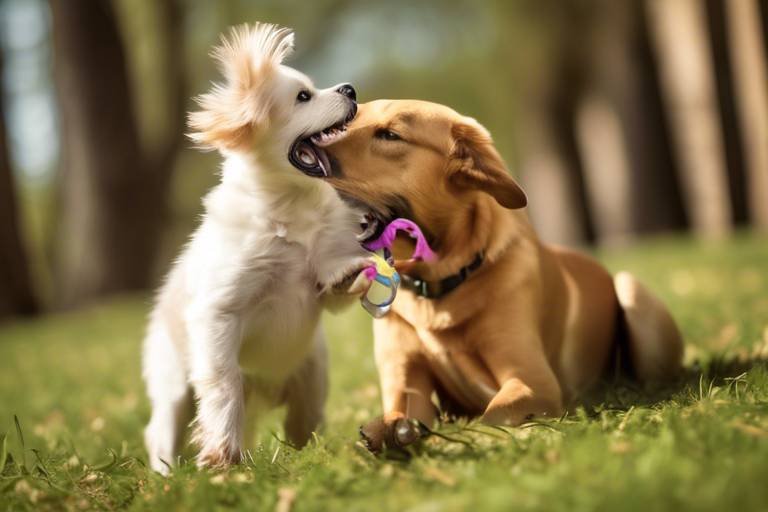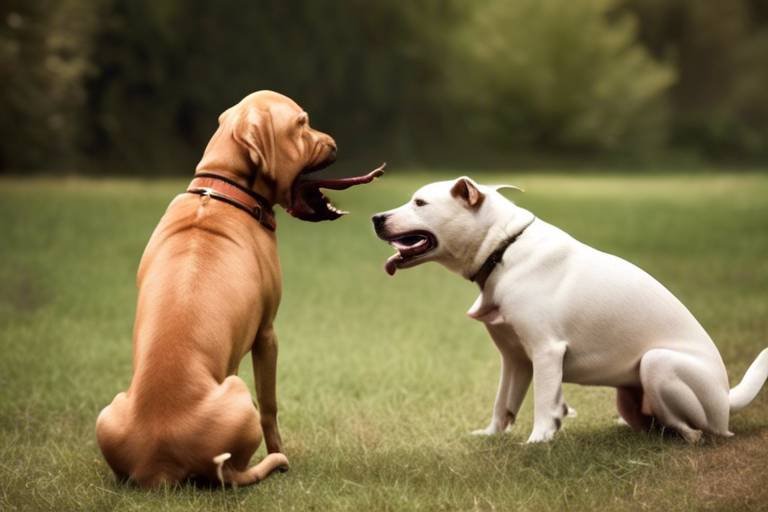Tips for Training Your Pet to Accept Handling by Others
Training your pet to accept handling by others is not just about teaching them to be calm; it’s about building trust and creating a bond that makes both your pet and the handler feel comfortable. Imagine your furry friend being calm and relaxed when meeting new people or visiting the vet—sounds great, right? The journey to achieving this involves understanding their behavior, creating a safe environment, and using effective training techniques. In this article, we’ll explore various strategies that can help your pet feel more at ease with handling by others, ensuring a positive experience for everyone involved.
Recognizing the signs of discomfort or anxiety in your pet is crucial. Just like humans, pets have their own ways of expressing how they feel. Some common behavioral cues include:
- Tail Position: A tucked tail can indicate fear, while a wagging tail often means excitement.
- Body Language: If your pet is stiff or trying to back away, they may not be comfortable.
- Vocalizations: Growling, whining, or barking can be signs of distress.
By paying attention to these cues, you can tailor your training approach to better suit your pet's needs. For instance, if your pet shows signs of anxiety when a stranger approaches, you can take a step back and allow them to adjust at their own pace.
Establishing a calm and secure space is essential for your pet's training. Think of it as creating a cozy nook where your pet feels safe and relaxed. This could be a quiet room in your home, free from distractions and loud noises. To set up this environment:
- Use comfortable bedding and familiar toys to help your pet feel at home.
- Keep the space free from sudden movements or loud sounds that could startle them.
- Consider using calming scents, such as lavender, to promote relaxation.
Once your pet feels secure in their environment, they will be more open to new experiences, including being handled by others.
Desensitization is a key method in training. It involves gradually exposing your pet to handling by others without overwhelming them. Start by introducing gentle touches from familiar people, allowing your pet to get used to the sensation. Here’s a simple step-by-step technique:
- Begin with short sessions of gentle petting while your pet is relaxed.
- Gradually increase the duration of the handling sessions.
- Introduce new handlers slowly, starting with someone your pet knows.
By taking small steps, you can help your pet build confidence and reduce anxiety over time.
Introducing your pet to new handlers requires a careful approach. Think of it like introducing a new friend to your best buddy. You wouldn’t want to throw them into the mix without some groundwork! Start by allowing your pet to observe the new handler from a distance, letting them approach at their own pace. Here are some tips:
- Use treats to create positive associations with the new handler.
- Encourage the handler to speak softly and move slowly to avoid startling your pet.
- Monitor your pet's body language and be ready to step in if they show signs of distress.
This gradual introduction can help ease any tension and promote a positive experience for your pet.
Utilizing positive reinforcement can significantly enhance your training efforts. Imagine your pet’s tail wagging with joy every time they successfully accept handling! This can be achieved by rewarding your pet with treats, praise, or playtime when they remain calm during handling sessions. Here’s how to implement positive reinforcement:
- Use high-value treats that your pet loves.
- Be consistent with your rewards—give them immediately after a positive behavior.
- Gradually reduce the frequency of treats as your pet becomes more comfortable.
By focusing on rewarding good behavior, you’ll reinforce the idea that being handled is a positive experience.
Socializing your pet with other animals can improve their comfort levels. Just like humans, pets benefit from interacting with others. Start by introducing your pet to calm and friendly animals. Make sure these introductions happen in a controlled environment, where both pets can feel safe. You can:
- Arrange playdates with well-behaved pets.
- Visit dog parks during off-peak hours to avoid overwhelming your pet.
- Monitor interactions closely to ensure everyone is comfortable.
These social experiences can help your pet learn to accept handling from various individuals, including other pets.
Tracking your pet's progress is vital for effective training. Keep a journal or log to note your pet's reactions during handling sessions. This will help you identify patterns and areas that may need adjustment. If you notice your pet becoming more anxious, it might be time to slow down and revisit previous steps. Remember, patience is key! Celebrate small victories along the way, and don’t hesitate to adjust your techniques as needed.
Sometimes, professional assistance is necessary for overcoming handling issues. If you’ve tried various techniques but your pet continues to struggle, it may be time to consult a trainer or behaviorist. Look for someone who specializes in positive reinforcement and has experience with handling issues. They can provide tailored strategies and support to help your pet feel more comfortable.
Q1: How long will it take for my pet to accept handling by others?
A1: The time it takes varies by pet. Some may adapt quickly, while others may need weeks or even months. Consistency and patience are crucial.
Q2: What if my pet shows aggression towards new handlers?
A2: If your pet displays aggressive behavior, it's important to seek professional help immediately. A trainer can assist in developing a safe and effective training plan.
Q3: Can I use toys as a reward during training?
A3: Absolutely! Many pets respond well to play as a form of positive reinforcement. Just make sure to use their favorite toys!
Q4: Is it necessary to socialize my pet with other animals?
A4: While not mandatory, socialization can significantly improve your pet's comfort and confidence levels, making handling by others easier.

Understanding Your Pet's Behavior
When it comes to training your pet, the first step is to understand their behavior. Just like humans, pets have their own unique ways of expressing feelings, and recognizing these signs is crucial for effective training. Have you ever noticed your furry friend acting a bit off? Maybe they’re hiding, growling, or even licking their lips nervously? These behaviors can tell you a lot about how your pet is feeling in a given situation.
Pets often communicate through body language, and being attuned to these signals can make a world of difference. For example, a dog that is wagging its tail might seem happy, but did you know that a slow wag can indicate uncertainty? Similarly, a cat that flattens its ears might be feeling threatened or scared. Understanding these cues can help you tailor your approach to their training. Here are some common behavioral signs to watch for:
- Body Posture: A relaxed stance indicates comfort, while a tense body suggests anxiety.
- Ears Position: Forward-facing ears usually mean curiosity, while pinned-back ears can signal fear or aggression.
- Vocalizations: Barking, meowing, or growling can express excitement, discomfort, or distress, depending on the context.
- Tail Position: A high, wagging tail often indicates happiness, while a tucked tail can signify fear or submission.
By observing these behaviors, you can gauge how your pet feels about being handled by others. For instance, if your dog seems anxious when a stranger approaches, it’s essential to take a step back and reassess the situation. Maybe you need to work on building their confidence before introducing them to new people. Think of it like this: Would you feel comfortable jumping into a pool if you didn't know how to swim? Of course not! Your pet needs to feel secure before they can accept handling from others.
Moreover, pets can have different comfort levels with various types of handling. Some may be okay with being petted but uncomfortable with being picked up. Understanding these nuances will help you create a training plan that respects your pet's boundaries while gradually encouraging them to accept more handling. Remember, patience is key! Just like learning a new skill, your pet needs time to adjust to new experiences.
In summary, understanding your pet's behavior is the foundation of successful training. By paying attention to their body language and emotional cues, you can create a positive environment that fosters trust and comfort. This approach not only improves their ability to accept handling by others but also strengthens the bond between you and your furry friend. After all, a happy pet is a well-adjusted pet!
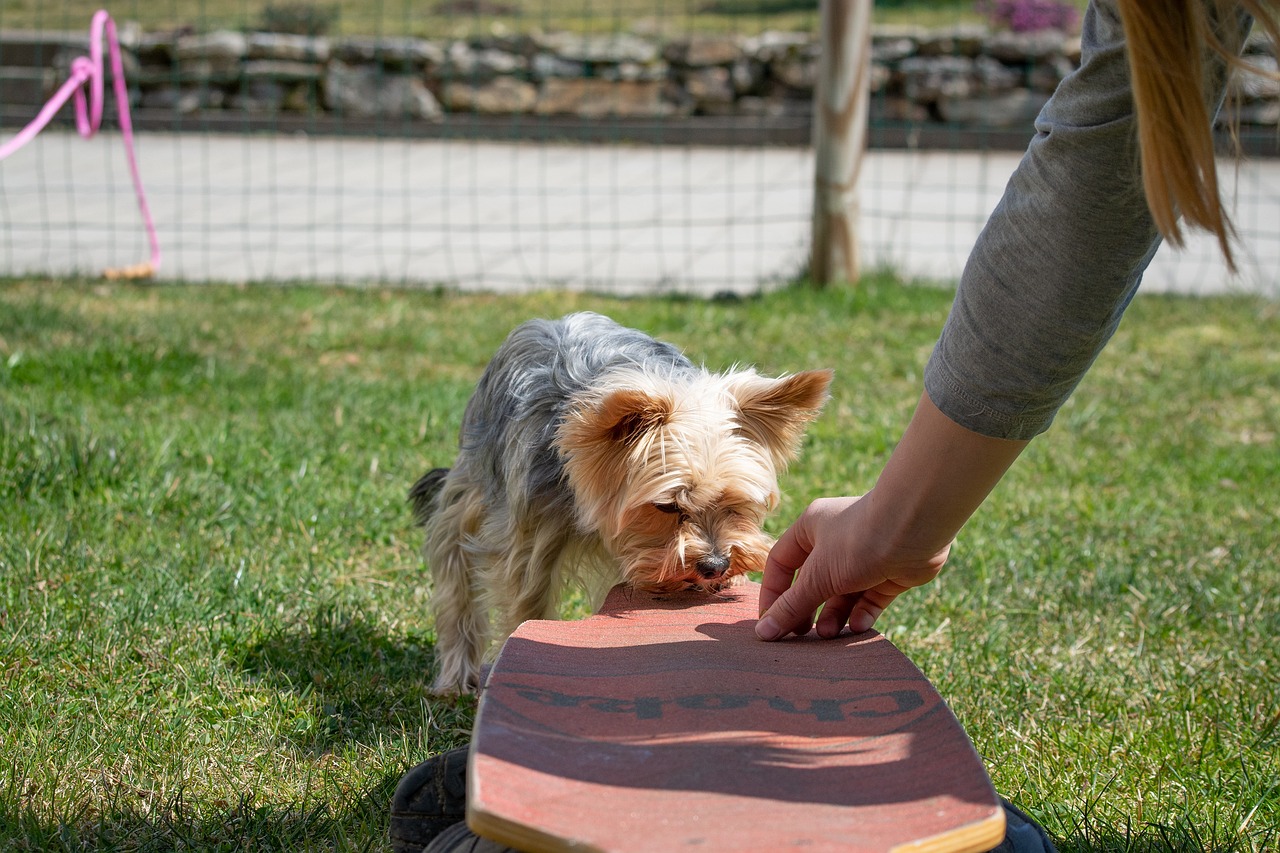
Creating a Safe Environment
Creating a safe environment for your pet is not just about physical space; it's about cultivating an atmosphere where your furry friend feels secure and relaxed. Think of it as building a cozy nest, where your pet can unwind and feel at ease. The first step in this journey is to identify a designated area in your home that is quiet and free from distractions. This could be a specific room or a corner with their favorite blanket or bed. The goal is to make this space a sanctuary that they can retreat to whenever they feel overwhelmed.
Next, consider the sensory environment. Pets, especially dogs and cats, can be sensitive to sounds, smells, and sights. For instance, if your pet is easily startled by loud noises, you might want to keep them away from busy areas of your home or use white noise machines to drown out sudden sounds. Additionally, ensure that the space is free from any items that could cause accidents or injuries. This includes removing sharp objects, toxic plants, or anything that your pet might chew on that could be harmful.
Another essential aspect is to introduce calming elements to the environment. This can include:
- Soft lighting to create a mellow atmosphere
- Comfortable bedding that provides a sense of security
- Calming scents, such as lavender or chamomile, which can help soothe anxious pets
Moreover, it’s crucial to maintain a routine. Pets thrive on predictability, and having a consistent schedule for feeding, playtime, and training can significantly reduce anxiety levels. Think of it as setting a rhythm to their day, much like how we find comfort in our daily routines. This predictability helps your pet understand what to expect, making them feel more in control and less anxious about new experiences.
Finally, always monitor your pet's behavior in this environment. Look for signs of stress or discomfort, such as excessive panting, pacing, or hiding. If you notice these signs, it may be necessary to adjust the environment further. Remember, creating a safe and welcoming space is an ongoing process, and being attentive to your pet's needs will help you make the necessary changes.
In summary, a safe environment encompasses physical safety, sensory comfort, routine stability, and ongoing observation. By focusing on these elements, you’ll not only help your pet feel secure but also lay the groundwork for successful handling training in the future.

Gradual Desensitization Techniques
When it comes to training your pet to accept handling by others, gradual desensitization is a game changer. Think of it as a gentle introduction to the world of human interaction, where your pet learns to associate touch and handling with positive experiences rather than fear or anxiety. The goal here is to take small, manageable steps that build your pet's confidence over time. This process is akin to slowly dipping your toes into a cool pool rather than jumping in all at once. So, how do you get started?
First, it’s essential to observe your pet’s body language. Signs of discomfort might include stiffening, growling, or trying to escape. Recognizing these signals will help you tailor your approach. Start by allowing your pet to become accustomed to being touched in a non-threatening way. For instance, begin by gently petting them in areas they are comfortable with, like their back or sides. This initial step is crucial as it sets the stage for more advanced handling.
Once your pet is comfortable with light touches, you can gradually introduce more handling. Here’s a simple breakdown of the process:
| Step | Description |
|---|---|
| 1 | Start with short sessions of gentle petting. |
| 2 | Gradually increase the duration of handling as your pet becomes more relaxed. |
| 3 | Introduce handling of different body parts, such as paws or tail, slowly. |
| 4 | Incorporate new handlers during these sessions, ensuring they are calm and gentle. |
As you progress through these steps, it’s vital to keep the experience positive. Use treats or praise to reinforce good behavior. For instance, if your pet remains calm while you touch their paws, offer a small treat and lots of affection. This positive reinforcement creates a mental connection between handling and rewards, making your pet more likely to accept it in the future.
Remember, patience is key! Each pet is unique, and what works for one may not work for another. If your pet shows signs of stress, it’s important to take a step back and give them time to adjust. You might even consider breaking down the steps further or spending more time on a particular stage before moving on. The goal is to ensure that your pet feels safe and secure throughout the process.
In conclusion, gradual desensitization is a powerful tool in your training arsenal. By taking small, thoughtful steps, you can help your pet become more comfortable with handling by others, paving the way for a happier, more confident companion.
- What if my pet is still anxious after several sessions? It's important to remain patient and possibly consult a professional trainer for additional techniques.
- How long should each desensitization session last? Start with short sessions of about 5-10 minutes and gradually increase the duration as your pet becomes more comfortable.
- Can I use toys during desensitization? Absolutely! Incorporating toys can help distract your pet and make the experience more enjoyable.
Introducing New Handlers
Introducing your pet to new handlers can be a daunting task, both for you and your furry friend. Imagine your pet as a shy child meeting new classmates for the first time; they might feel a mix of excitement and anxiety. The key to making these introductions smooth and stress-free lies in your approach. Start by ensuring that your pet is in a calm state before the introduction. If they are already anxious or agitated, it’s likely that the meeting will only exacerbate their discomfort.
One effective method is to allow your pet to observe the new handler from a distance. This way, they can get used to the handler's presence without feeling overwhelmed. Gradually decrease the distance as your pet becomes more comfortable. During this phase, it's crucial to remain patient and not rush the process. Remember, every pet is different, and some may take longer to adjust than others.
When the time comes to allow the new handler to approach, encourage them to keep their movements slow and gentle. A sudden gesture can startle your pet and set back the progress you've made. It can be helpful for the handler to offer a treat or a favorite toy as a peace offering. This not only creates a positive association but also helps your pet to view the new handler as a friend rather than a threat.
Moreover, consider the following tips when introducing new handlers:
- Choose the Right Environment: Opt for a familiar and quiet space where your pet feels secure. Avoid crowded or noisy areas that might heighten their anxiety.
- Use Positive Reinforcement: Reward your pet with treats or praise when they display calm behavior around the new handler. This reinforces the idea that new people can be a source of good things.
- Take It Slow: Don’t rush the introduction. Allow your pet to approach the handler at their own pace. If they seem overwhelmed, it’s perfectly fine to take a step back and try again later.
As your pet becomes more comfortable, you can gradually increase the level of interaction. Start with simple tasks like petting or gentle brushing, and slowly progress to more involved handling. Always keep an eye on your pet's body language, as it will be your best indicator of their comfort level. Signs of discomfort can include stiffening, pulling away, or a tucked tail. If you notice any of these signs, it’s essential to take a step back and reassure your pet.
In conclusion, introducing new handlers to your pet is a journey that requires patience, understanding, and a sprinkle of creativity. By creating a positive environment, using gradual exposure, and reinforcing good behavior, you can help your pet overcome their fears and learn to accept handling by others. Remember, every step forward is a victory, no matter how small!
Positive Reinforcement Methods
When it comes to training your pet to accept handling by others, positive reinforcement is one of the most effective methods you can employ. This technique revolves around rewarding your pet for exhibiting desirable behaviors, making it more likely they will repeat those behaviors in the future. Imagine this as a game where your pet is the star player, and every time they make a good move, they get a treat or praise. This not only motivates them but also builds their confidence and strengthens your bond.
So, how do you implement positive reinforcement in your training routine? First, it's essential to identify what your pet finds rewarding. This could be treats, toys, or even your enthusiastic praise. Once you've pinpointed these rewards, you can start associating them with the handling process. For instance, when someone new approaches your pet, you can offer a treat as soon as they remain calm. This way, your pet learns that new experiences can lead to positive outcomes.
Furthermore, timing is crucial when it comes to positive reinforcement. You want to reward your pet immediately after they exhibit the desired behavior. This creates a clear connection in their minds between their action and the reward. If your dog sits calmly while being petted, reward them right then and there! This reinforces the behavior and makes it more likely they'll repeat it in the future.
Additionally, you can create a training schedule that incorporates short, fun sessions. Keep these sessions around 5-10 minutes to maintain your pet's interest. During these sessions, gradually introduce handling techniques, such as gently touching their paws or ears. Each time they handle it well, shower them with praise and rewards. Over time, your pet will start to associate handling with positive experiences, making them more comfortable.
To give you a clearer picture, let’s look at a simple table that outlines the rewards you can use:
| Type of Reward | Description |
|---|---|
| Treats | Small, tasty snacks that your pet loves. |
| Toys | Favorite toys that can be used for playtime after a successful session. |
| Praise | Verbal affirmations and petting that show your pet they did well. |
Remember, consistency is key. Use the same rewards and commands each time to avoid confusing your pet. If you're using treats, make sure they are small and easy to chew, allowing for quick reward delivery. Also, be mindful of your pet's weight; you don't want to overindulge them with too many snacks during training.
As you continue to practice, you may notice that your pet starts to respond more positively to handling by others. They might wag their tail or lean into the person as they receive affection! These are signs that your training is paying off. However, if you notice any signs of anxiety or discomfort, take a step back and reassess your approach. Training should always be a positive experience for both of you.
In conclusion, using positive reinforcement methods can significantly enhance your pet's comfort level with being handled by others. By rewarding them for good behavior and creating a fun, engaging training environment, you’re setting the stage for a more relaxed and happy pet. Remember, every small victory counts, so celebrate them along the way!
- What if my pet doesn't respond to treats? Some pets may prefer toys or praise over food. Experiment with different rewards to find what motivates them best.
- How long should I train my pet each day? Short, frequent sessions of 5-10 minutes are more effective than longer ones.
- Can I use positive reinforcement for other behaviors? Absolutely! This method can be applied to various training aspects, from basic commands to more complex tricks.
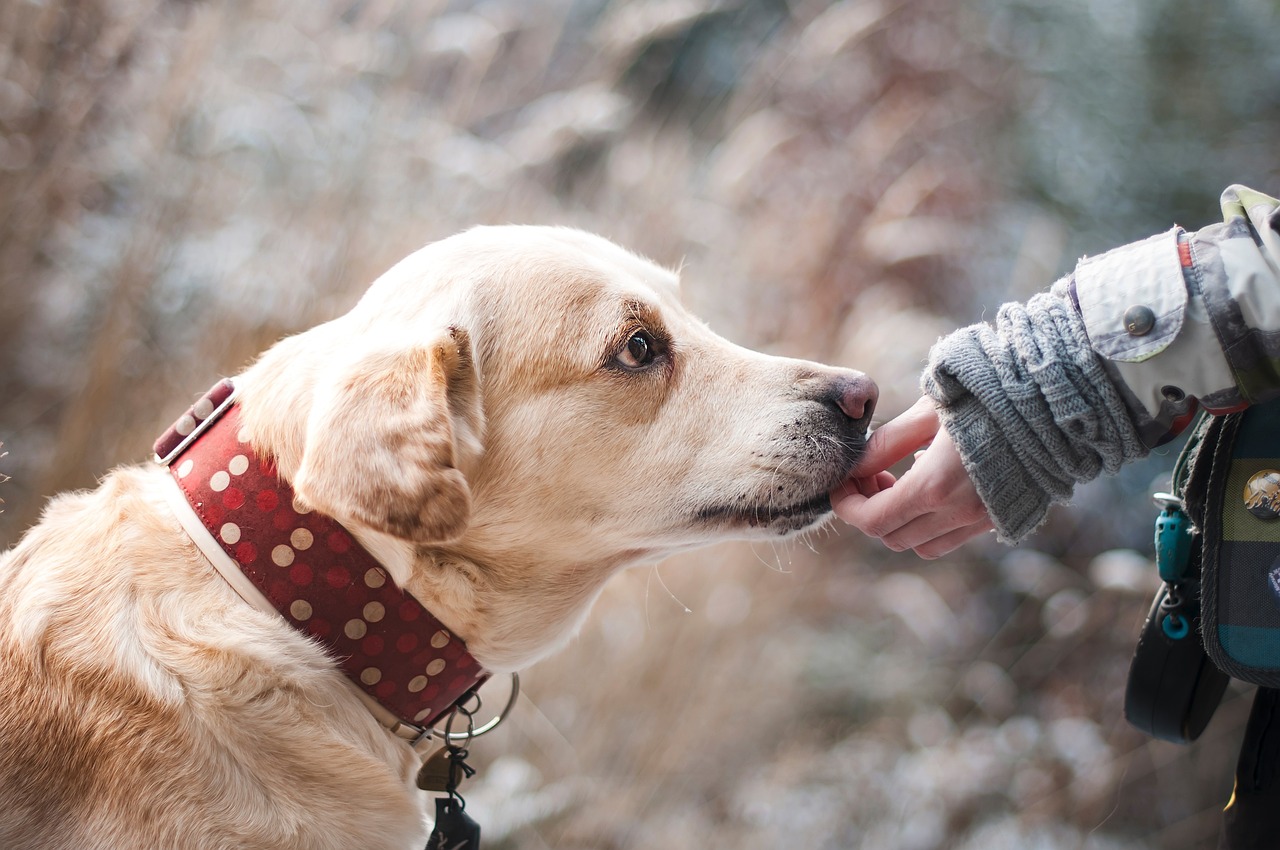
Socialization with Other Pets
When it comes to training your pet, one of the most enriching experiences can be . Just like humans, animals thrive on interaction, and introducing your pet to other animals can significantly enhance their comfort levels and overall behavior. Think of it as a playdate for your furry friend; it’s not just about having fun, but also about learning how to interact with others in a positive way. However, the process of socialization should be approached with care and consideration to ensure that your pet feels safe and secure.
Before diving into socialization, it's crucial to understand your pet's unique personality. Some pets are naturally more outgoing, while others may be shy or anxious. Recognizing these traits will help you tailor your approach. For instance, if you have a timid dog, you wouldn’t want to throw them into a large group of boisterous dogs right away. Instead, start with one calm, friendly pet. This gradual approach can prevent overwhelming your pet and allows them to build confidence at their own pace.
One effective strategy for socializing your pet is to choose a neutral location for the first meeting. This could be a park or a friend’s backyard—somewhere that doesn’t feel territorial to either animal. It's essential to keep the atmosphere relaxed. You can even bring along some of your pet's favorite toys or treats to create positive associations with the new environment. During this time, observe both pets' body language closely; signs of stress, such as tucked tails or excessive barking, indicate that it may be time to take a step back.
As your pet becomes more comfortable, you can gradually increase the number of pets they interact with. Introducing them to a variety of animals can help them learn how to communicate effectively with different species. For example, if you have a dog, meeting a friendly cat can teach them to respect personal space. Remember, socialization isn’t just about play; it's also about teaching your pet how to read social cues from others. Positive experiences during these interactions will reinforce good behavior and reduce anxiety in future encounters.
To facilitate successful socialization, consider the following tips:
- Start with short play sessions and gradually increase their duration as your pet becomes more comfortable.
- Supervise all interactions to ensure safety and intervene if necessary.
- Reward your pet with treats and praise for calm behavior during socialization.
- Be patient and allow your pet to set the pace of the interaction.
Incorporating socialization into your pet's routine can lead to a more well-rounded and confident companion. Just like a child learns from their peers, pets also benefit from engaging with others. The skills they acquire during these interactions can enhance their adaptability in various situations, from meeting new people to visiting the vet. In essence, socialization is not just a training tool; it’s a vital component of your pet's overall well-being.
Q: How often should I socialize my pet?
A: Regular socialization is key. Aim for at least a few interactions each week, gradually increasing the frequency as your pet becomes more comfortable.
Q: What if my pet shows aggression towards other animals?
A: It's important to seek professional help if your pet displays aggressive behavior. A trainer can provide tailored strategies to address this issue safely.
Q: Can I socialize my pet with different species?
A: Yes! Socializing with various species can be beneficial, but always supervise these interactions closely to ensure safety for all involved.
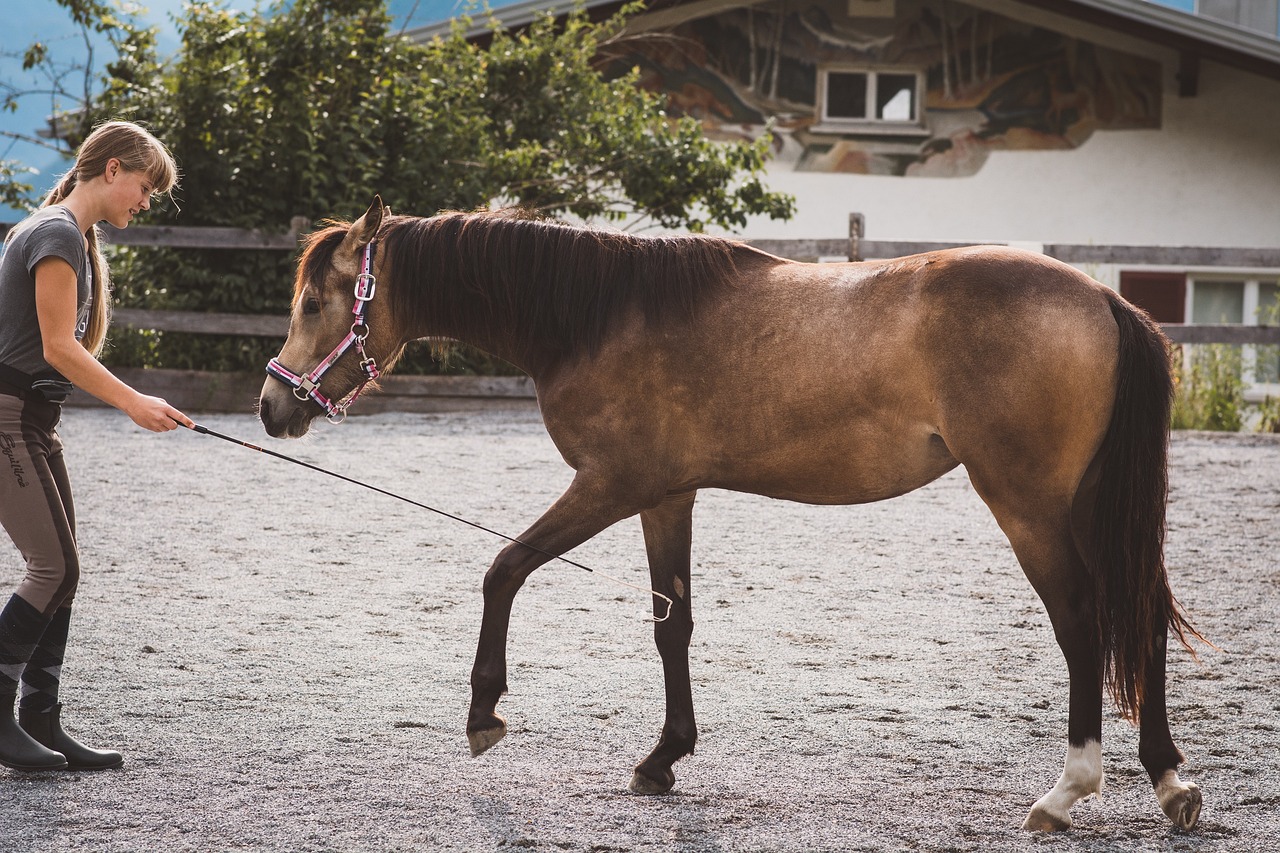
Monitoring Progress and Adjusting Techniques
When it comes to training your pet to accept handling by others, monitoring their progress is not just important—it's essential! Think of it like navigating a road trip; you wouldn’t just hop in the car and drive aimlessly without checking your map or GPS, right? Similarly, you need to keep an eye on how your furry friend is responding to the training techniques you've implemented. This not only helps you gauge their comfort level but also allows you to make necessary adjustments along the way.
Start by keeping a journal or a simple log where you note down your pet's reactions during handling sessions. Are they more relaxed today than they were last week? Do they seem to be responding positively to new handlers? These observations will provide invaluable insights into their progress and help you identify any areas that may need further attention.
It's also beneficial to set specific goals for each training session. For instance, if your goal is to have your pet comfortable with being petted by a stranger, you might break this down into smaller milestones, such as:
- Allowing a stranger to approach without backing away.
- Accepting gentle touches on their back.
- Progressing to petting for a longer duration.
By breaking down the training into digestible parts, you can celebrate small victories, which in turn boosts your pet's confidence and encourages them to continue progressing. Remember, patience is key. If you notice that your pet is struggling with a particular step, don’t hesitate to take a step back and revisit previous techniques. Sometimes, a little extra time spent on foundational skills can make all the difference.
Additionally, consider the environment in which you're conducting your training. Is it too noisy or chaotic? A calm, quiet space can significantly enhance your pet's ability to focus and learn. If distractions are present, try to minimize them or choose a different setting for your sessions.
Lastly, don’t forget to involve other handlers in the monitoring process. Ask friends or family members to observe your pet during handling sessions. They might notice things you miss or offer different perspectives on your pet's behavior. This collaborative approach can lead to more comprehensive insights into your pet's progress.
In conclusion, monitoring your pet's progress and adjusting your techniques accordingly is a dynamic and ongoing process. By being observant, patient, and flexible, you can create a supportive training environment that fosters comfort and trust between your pet and others. Remember, every little step counts, and with love and determination, you’ll witness your pet blossoming into a well-adjusted companion.
Here are some common questions pet owners ask about training their pets to accept handling:
- How long should I spend on each training session? Aim for 5 to 10 minutes per session, especially for younger pets. Keep it fun and engaging!
- What if my pet continues to show signs of anxiety? If your pet seems overly stressed, it may be time to slow down and revisit previous steps. Consider consulting a professional trainer if anxiety persists.
- Can I use treats during training? Absolutely! Positive reinforcement, such as treats and praise, can motivate your pet and create a positive association with being handled.
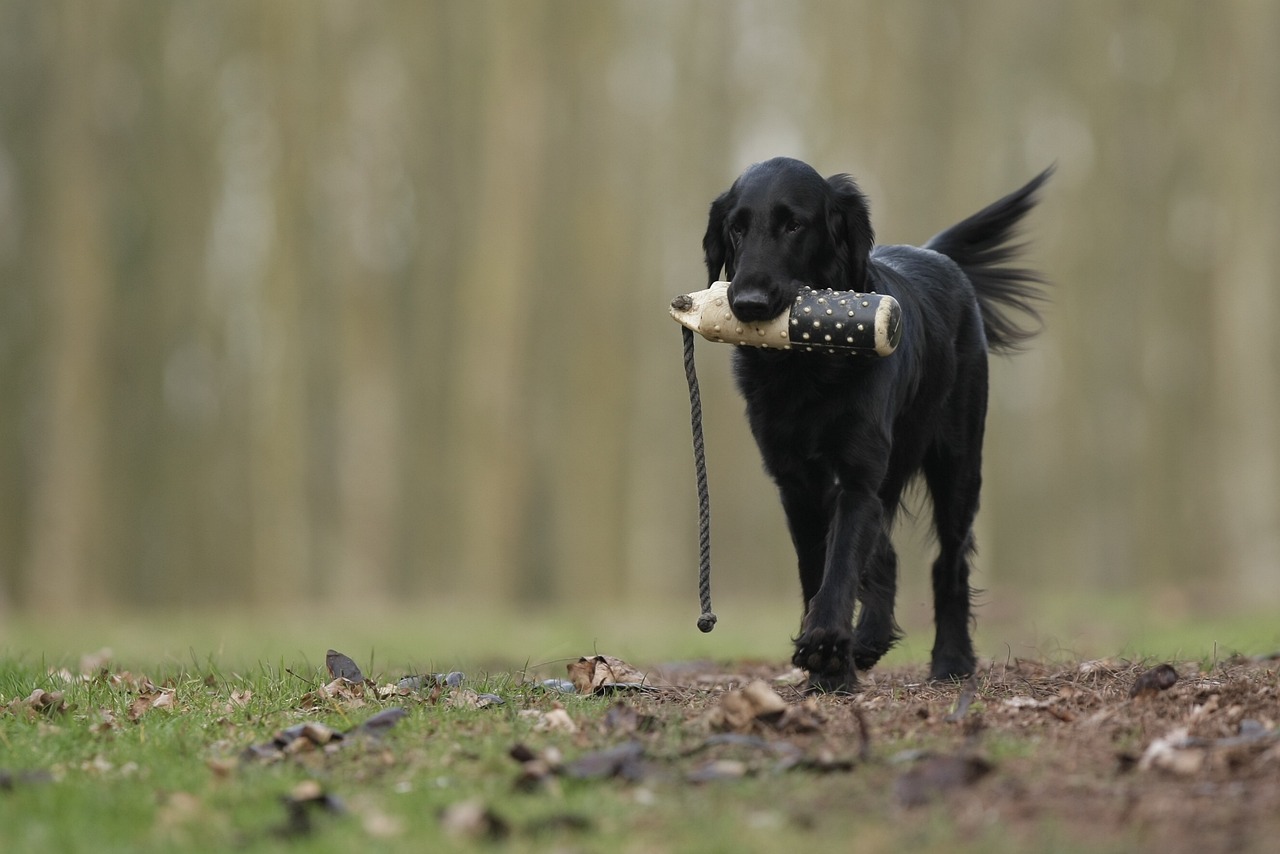
Seeking Professional Help
Sometimes, despite our best efforts, we may find ourselves in a situation where our pets are still struggling with accepting handling by others. This can be particularly true for pets that have had traumatic experiences in the past or those that are naturally more anxious. In such cases, seeking professional help can be a game-changer. Professional trainers and animal behaviorists have the knowledge and experience to identify underlying issues that might not be apparent to the average pet owner. They can provide tailored strategies that are more effective than generic advice.
When considering professional help, it's essential to look for someone who uses positive reinforcement techniques rather than aversive methods. Positive reinforcement not only helps in building trust but also makes the learning process enjoyable for your pet. You might be wondering, "How do I find the right trainer?" Here are a few tips:
- **Research Credentials**: Look for trainers who are certified by reputable organizations such as the Association of Professional Dog Trainers (APDT) or the International Association of Animal Behavior Consultants (IAABC).
- **Read Reviews**: Check online reviews and testimonials from other pet owners. This can give you insight into the trainer's methods and success rates.
- **Ask Questions**: Don't hesitate to ask potential trainers about their approach to handling issues. A good trainer will be happy to explain their techniques and philosophy.
It's also important to consider the trainer's experience with your specific type of pet. For instance, a trainer who specializes in dogs may not have the same expertise with cats or exotic pets. Make sure to communicate your pet's specific needs and any previous experiences that might affect their behavior during handling.
Once you've found a professional, be prepared to participate in the training process. Many trainers will encourage owners to be actively involved, as your presence can provide comfort and reassurance to your pet. This collaborative approach not only helps your pet learn faster but also strengthens the bond between you and your furry friend.
In some cases, professional help may also involve addressing health-related issues that could be contributing to your pet's anxiety. A veterinarian can rule out any medical conditions that might cause discomfort during handling. If necessary, they may recommend working alongside a behaviorist to ensure a comprehensive approach to your pet's training.
Ultimately, seeking professional help can provide the support and guidance you need to help your pet feel more comfortable with handling by others. Remember, every pet is unique, and what works for one may not work for another. Having an expert by your side can make all the difference in creating a positive and stress-free experience for both you and your pet.
Q: How do I know if my pet needs professional help?
A: If your pet shows consistent signs of fear or aggression during handling, or if your attempts at training have not yielded results, it may be time to seek professional assistance.
Q: What should I expect during a training session?
A: Training sessions typically involve observing your pet's behavior, discussing your goals with the trainer, and practicing techniques that promote positive associations with handling.
Q: How long will it take to see improvements?
A: The timeline for improvement varies based on your pet's individual temperament and the severity of their issues. Some may show progress quickly, while others may take more time.
Frequently Asked Questions
- What signs should I look for to know if my pet is anxious about being handled?
Pets often communicate their discomfort through body language. Look for signs like cowering, tail tucking, growling, or trying to escape. If your pet flinches when approached or shows signs of stress, like panting or excessive licking, it’s a clear indication they might not be comfortable with handling.
- How can I create a safe environment for my pet during training?
To create a safe environment, ensure that the space is quiet and free from distractions. Use familiar items like blankets or toys to make your pet feel secure. Setting up a designated area where your pet feels comfortable can significantly enhance their confidence during handling practice.
- What is gradual desensitization and how do I apply it?
Gradual desensitization involves slowly introducing your pet to handling in a controlled manner. Start with brief interactions, like gentle touches, and gradually increase the duration and intensity. This method helps your pet acclimate to being handled without feeling overwhelmed.
- How can I introduce new handlers to my pet effectively?
When introducing new handlers, it’s essential to do so slowly. Allow your pet to approach the new person at their own pace. Encourage the handler to offer treats and speak softly, creating a positive association with the new person. Patience is key—never rush the process!
- What types of positive reinforcement work best during handling practice?
Positive reinforcement can include treats, praise, or playtime. Find what motivates your pet the most and use it as a reward for calm behavior during handling. The goal is to make the experience enjoyable, so your pet looks forward to being handled.
- How can socializing my pet with other animals help?
Socialization can improve your pet's overall confidence and comfort levels. By interacting with other pets, they learn to navigate different situations and become more adaptable. Just ensure that introductions are done in a controlled manner to prevent overwhelming your pet.
- What should I do if I notice my pet is not making progress?
If you find that your pet isn't progressing, it's important to reassess your techniques. Try adjusting the pace of training or the rewards you’re using. Sometimes, seeking help from a professional trainer or behaviorist can provide the insight needed to overcome specific challenges.
- When is it appropriate to seek professional help for my pet?
If your pet exhibits extreme fear or aggression during handling, or if you're feeling overwhelmed by the training process, it’s a good idea to consult a professional. They can provide tailored strategies and support to help both you and your pet navigate these challenges effectively.













